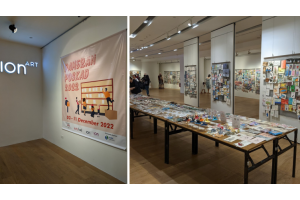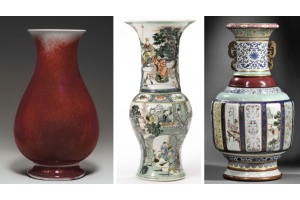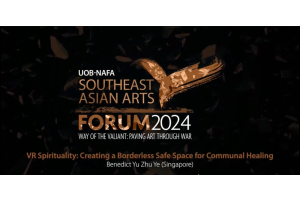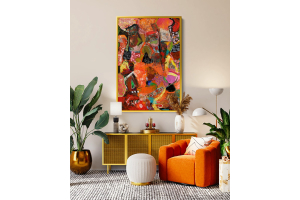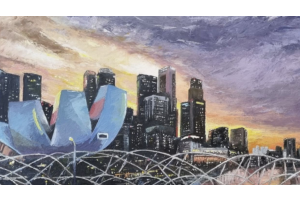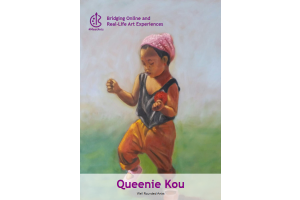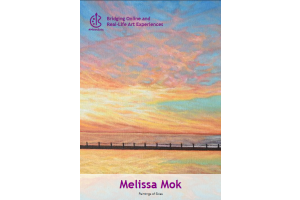Unleashing Creativity: Exploring the Wonders of Digital Art
-
July 04, 2023
Informational
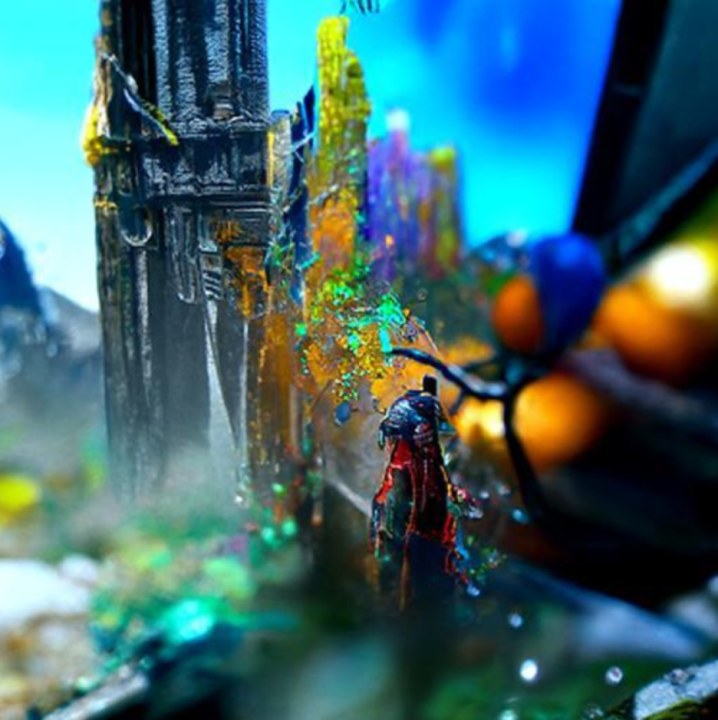
Written by: Steven Shannon
At #MeetArts, we support emerging artists’ endeavors as they portray their life stories and experiences in their artwork through different mediums, and one of those mediums is digital art.
While digital art has been around for over thirty years, digital art is recently under the spotlight as more artists are incorporating technology into their artworks and as more auction houses are selling digital artworks. Today, we explore digital art, its relevance to modern society, and various forms of digital art.
Understanding Digital Art
Digital art, at its core, is any artwork that uses digital technology as an essential part of the creative process. Some examples include digital paintings, animations, and videos. It falls under new media art, a category of art that includes all forms of contemporary art made, altered, or transmitted with new forms of media technology. As the technology expands, new styles and forms of digital art open up, ranging from computer graphics and pixel art to AI-generated art, and allows artists to express themselves with many more tools than before.
Types of Digital Art:
- Digital Painting: Created using software that mimics traditional painting techniques.
- 3D Modeling: Involves creating three-dimensional objects and scenes, often used in video games and movies.
- Digital Photography: Manipulation of images captured with a digital camera.
- Vector Art: Made using vector graphic software, allowing for clean, scalable images.
Is digital art art?
A large controversy of AI-generated art, one of the many forms of digital art, is if these artworks can be considered art. The argument stems mainly from the fact that the integration of technology into the process drastically simplifies the process. While traditional artists need to learn brush strokes, color mixing, shading, and pigments, digital artists can choose one of many premade brush strokes, select a color, wave their stylus across the tablet, and undo. This belief creates the illusion that digital artists have it easy and their artworks are not as valuable as traditional artists’ works.
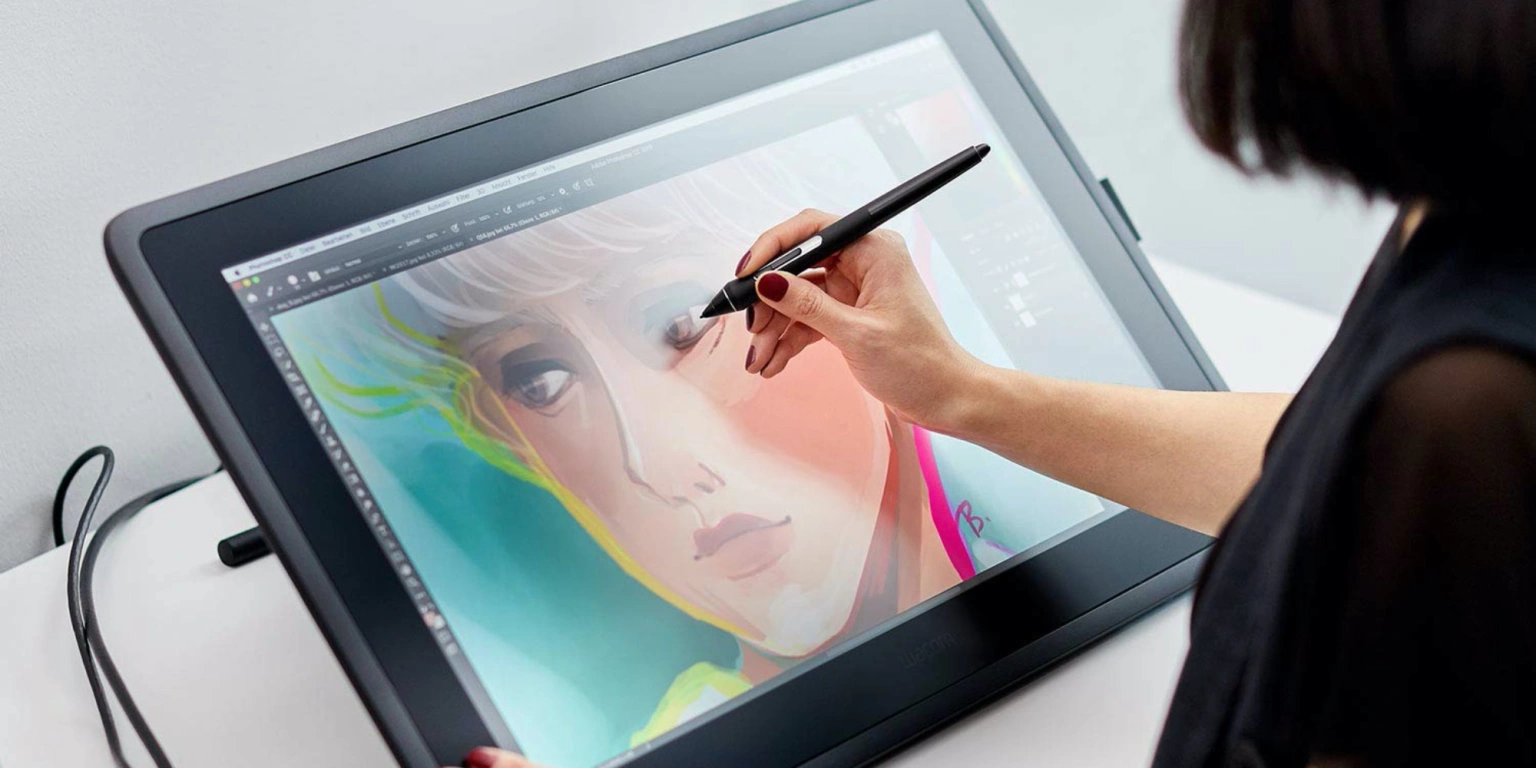
Drawing artwork on a tablet with a stylus. Source: https://9to5toys.com/2020/03/12/wacom-cintiq-22-drawing-tablet/
While digital art does simplify the process, it does not take away the idea that the artist needs to master many of the same foundational skills as traditional artists. It may not be mixing colors manually, but some skills digital artists still need to learn include color theory and perspectives. Core skills such as these are present in the creative process of any artistic method. In addition, learning digital art means having to pick up new, different skills as well. Especially because technology is a core element of the process, the artist needs to be tech-savvy, and as each digital art software is different, the artist needs to understand every nook and cranny of all the programs before mastering the practice.
However, the growth of digital art leads to the growth of art as a whole. The difference in skill sets required for traditional and digital arts means more people are able to express their feelings in ways they couldn’t before. Those who couldn’t paint can generate AI paintings. Those who couldn’t sculpt can 3D model. Digital art opens up the venue of art to more people, and we get to see art from people from all walks of life.
The argument that digital art is not real art also undermines the concept of art as well. The meaning of art is to express one’s own feelings and experiences onto a canvas, to reflect the current state of the world, and to always be pushing boundaries and changing definitions. Today, we rely heavily on technology, and as technology advances, we take a step with it. Walking towards this techy world, there is nothing more appropriate than the rise of digital art to reflect this. In fact, the argument itself may be interpreted as a reflection and a capture of the generational gap between those who do not understand technology and view it as a hindrance and those who have it ingrained in their lives.
Digital Art Trends
When technology grows, so does digital art, and with digital art’s plethora of supporting technology, the art form is always expanding. Currently, there are many mediums of digital art. From drawing on a tablet to editing the data of an image file, the number of ways you can become a digital artist is overwhelming, so here are a few trending forms of digital art that you can take a look at:
1.Fractal Art
Fractal art is one of the earliest forms of digital art. It stems from algorithmic art, which requires the artist to produce equations and code to create art. Fractal art also requires mathematical equations and algorithms but features intricate geometric patterns and fractal mosaics. An interesting feature of fractal art is that there is a pattern and that you can see the pattern repeating as you continue to zoom in.
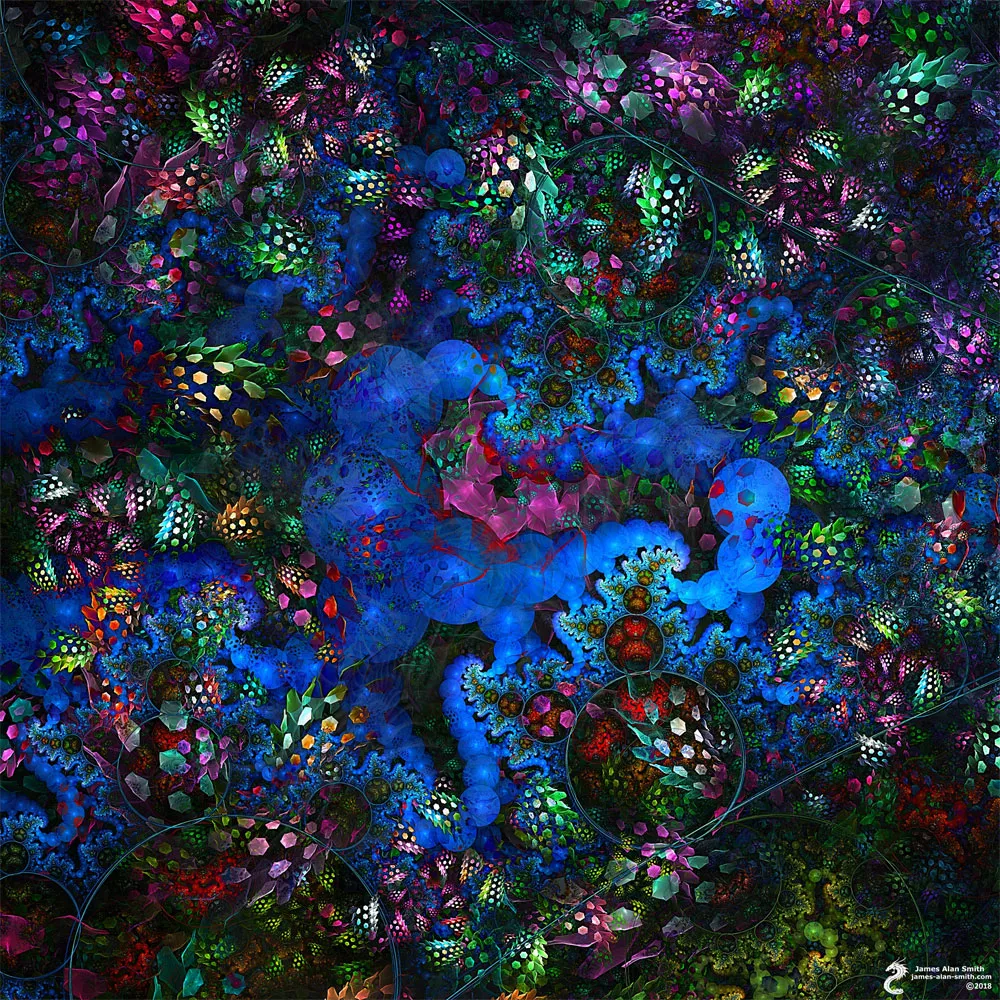
“Fragments of Creation” by James Alan Smith. Source: https://www.creativebloq.com/computer-arts/5-eye-popping-examples-fractal-art-71412376
2. Data-Moshing
Data-moshing, better known as glitch art, is an abstract form of digital art in which artists manipulate the image when they decode the file. It uses programmed glitches to create effects that resemble scrambled jigsaw pieces. Though appearing erratic and messy, the art piece also offers a psychedelic and thought-provoking experience.

Video still of Matt Caron’s Miley Cyrus datamosh. Source: https://newatlas.com/art-technology-digital-datamoshing/48152/
3. NFT Art
An NFT is a non-fungible token and a digital asset existing only in the digital space. Because it is so secure, it is often used for authentication and proof of ownership. This way, whoever owns the token has sole ownership of the asset. NFTs are novel in that the asset can be anything from an artwork to a screenshot of a Twitter post.
4. AI Art
AI art is a rising form of art in which an artificial intelligence software reads in a prompt written by the user and generates an image in an attempt to match the text. However, the generated artwork often has a few oddities. It largely depends on the prompt, and the process may require many trial-and-error tweakings of the prompt as well. In the end, it may also require additional touch-ups from external photo-editing software to produce desired results.
5. Digital Painting
Digital painting is the most common form of digital art. It is a digital replication of the traditional form of painting, using a tablet and stylus as the canvas and brush. There are many digital painting softwares with all different capabilities; however, the core feature of the digital art form is that it is very similar to traditional art.
The Market for Digital Art
The market for digital art is booming. The many mediums of digital art are matched only with the many venues to sell them in. Emerging artists are selling their artworks as independent vendors or commissioners on e-commerce platforms such as Etsy or Shopify, but large auction houses such as Christie’s and Sotheby’s are also opening digital art departments to sell digital artwork. Most of the success of the digital art market comes from the promotion and sales of NFTs. For instance, at Christie’s first NFT auction, one digital work sold for a record-breaking US$69 million, and at Sotheby’s, an NFT of an image of a single pixel was sold for US$1.36 million.
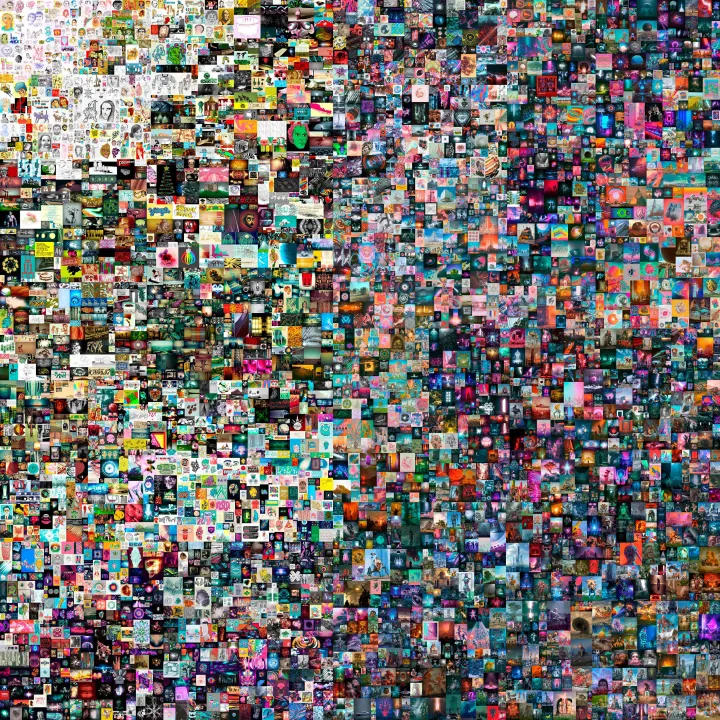
“Everydays: The First 5000 Day” by Mike Winkelmann (Beeple) sold at Christie’s. Source: https://www.nbcnews.com/business/business-news/digital-artwork-sells-record-60-million-christie-s-first-nft-n1260544
According to Art Basel and UBS, in 2021 digital art accounts for 11% of HNW collectors spending with 5% of Gen Z and 4% of millennials spending over US$1 million. Younger collectors are outpacing older generation collectors in this realm.
Digital Art for Beginners
If you're new to digital art, here's how to get started:
- Choose the Right Tools: Invest in a good digital drawing tablet and software. Popular choices include Adobe Photoshop, Corel Painter, and Procreate.
- Learn the Basics: Familiarize yourself with digital art techniques through tutorials and online courses. Websites like YouTube and platforms like Udemy offer valuable resources.
- Practice Regularly: Like any other art form, practice is key. Spend time experimenting with different tools and techniques to develop your style.
- Join a Community: Engage with other digital artists online. Communities on platforms like Reddit, DeviantArt, and Behance provide support, feedback, and inspiration.
Best Software for Digital Art
Choosing the right software is crucial for digital art creation. Here are some of the best options:
- Adobe Photoshop: Ideal for digital painting and photo manipulation.
- Corel Painter: Known for its realistic brushstrokes and textures.
- Procreate: A favorite among iPad users for its intuitive interface and powerful tools.
- Blender: Free software for 3D modeling, animation, and rendering.
Digital Art Techniques
Mastering digital art involves learning various techniques. Here are a few to get you started:
- Layering: Use layers to separate different elements of your artwork, making it easier to edit and manage.
- Blending: Techniques like smudging and gradient tools help create smooth transitions and realistic effects.
- Texturing: Add depth and detail to your work by incorporating textures.
- Lighting: Understand how to use light and shadow to enhance the realism of your digital art.
Conclusion
Digital art is a dynamic and exciting field that offers endless possibilities for creativity. Whether you're a beginner or an experienced artist looking to explore new mediums, digital art provides the tools and platforms to bring your visions to life. By understanding what digital art is and following this guide, you can start your journey to unleashing your creativity and mastering the digital canvas.
Under the spotlight, digital art is making its way up as a popular art style, introducing new artists and artworks. Check out our digital art portfolio at #MeetArts!
Resources:
- https://blog.artjam.com/digital-art
- https://magazine.artland.com/digital-art/
- https://www.masterclass.com/articles/new-media-art-guide
- https://agoradigital.art/blog-what-is-digital-art/
- https://design.tutsplus.com/articles/is-digital-art-real-art-facts-and-myths-about-digital-creating--cms-22010
- https://www.eden-gallery.com/news/what-is-digital-art
- https://okuha.com/what-is-digital-art/
- https://www.ciit.edu.ph/5-current-and-emerging-digital-arts-and-design-trends/#:~:text=5%20Current%20And%20Emerging%20Digital%20Arts%20and%20Design,Integrated%20Art%2FMixed%20Media%20...%205%20NFT%20Art%20
- https://www.architecturelab.net/types-of-digital-art/
- https://www.nbcnews.com/business/business-news/digital-artwork-sells-record-60-million-christie-s-first-nft-n1260544
- https://www.reuters.com/lifestyle/sothebys-sale-digital-only-artwork-fetches-168-million-2021-04-14/
- https://art.art/blog/what-we-have-all-been-waiting-for-the-art-basel-market-report


 PREVIOUS ARTICLE
PREVIOUS ARTICLE 

